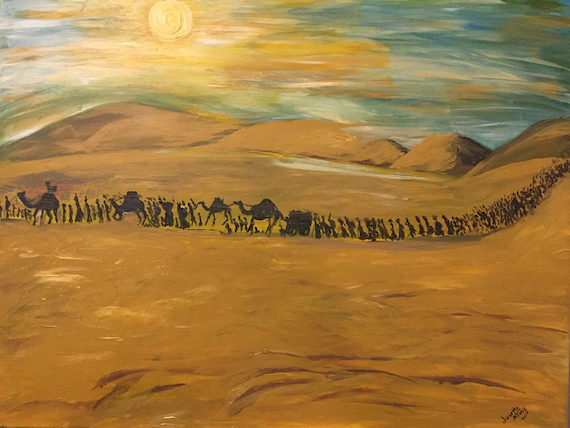The Tower of Babel
Hendrick van Cleve III (1525-1589)
Kröller-Müller Museum in Otterlo, Netherlands.
Long after Noah and his family had left the ark, their children spread out all over the world, and had their own families. They settled where there was good grass and water for their animals and where they could farm the land. They all spoke the same language, so they could talk and work together.
Some of the people made their way to the east, where they settled on a great plain. There they leamed to make bricks of mud and straw. and to bake them hard in the sun. With these bricks, they could build houses to live in.
They were so pleased with their building, they decided to build a city, with a great tower in the middle. The tower would be so high. they thought that it would reach up to Heaven, and all the people would become famous.
God watched the people working on the walls of their city and putting up their tower, brick by brick. He saw they had grown so proud, that they thought they could do anything: they thought they were almost like gods.
Before the tower was finished, God made the people speak in many different languages. Now they could no longer understand each other, or easily work together. Confused, they left the unfinished city, and spread out in all directions, each group speaking their own language.
They settled in different places, and grew into great nations in their own countries. The deserted tower became known as the Tower of Babel, after the people who 'babbled' in different languages.
According to the story, a united human race speaking a single language and migrating eastward, comes to the land of Shinar (שִׁנְעָר; Σενναάρ).
There they agree to build a city and a tower with its top in the sky. Yahweh, observing their city and tower, confounds their speech so that they can no longer understand each other, and scatters them around the world.
In his 1918 book, Folklore in the Old Testament, Scottish social anthropologist Sir James George Frazer documented similarities between Old Testament stories, such as the Flood, and indigenous legends around the world.
↪wikiwand: The Tower of Babel
He identified Livingston's account with a tale found in Lozi mythology, wherein the wicked men build a tower of masts to pursue the Creator-God, Nyambe, who has fled to Heaven on a spider-web, but the men perish when the masts collapse.












Comments
Post a Comment